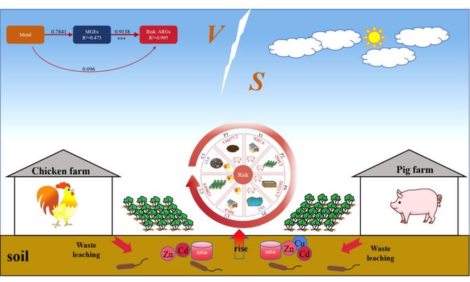



Weekly global protein digest: Brazil’s meat industry expanding port cold storage amid HPAI outbreak
Livestock analyst Jim Wyckoff reports on global protein newsWeekly USDA US beef, pork export sales
Beef: Net US sales of 12,300 MT for 2025 were down 16 percent from the previous week, but up 8 percent from the prior 4-week average. Increases were primarily for Japan (3,600 MT, including decreases of 200 MT), South Korea (2,800 MT, including decreases of 500 MT), Taiwan (1,800 MT, including decreases of 100 MT), Mexico (1,600 MT, including decreases of 100 MT), and Canada (600 MT). Exports of 14,800 MT were up 9 percent from the previous week and 3 percent from the prior 4-week average. The destinations were primarily to South Korea (5,400 MT), Japan (4,100 MT), Taiwan (1,600 MT), Mexico (1,500 MT), and Canada (800 MT).
Pork: Net US sales of 37,400 MT for 2025 were up 52 percent from the previous week and 68 percent from the prior 4-week average. Increases were primarily for Mexico (14,400 MT, including decreases of 100 MT), China (7,800 MT), Japan (3,300 MT, including decreases of 100 MT), South Korea (3,300 MT, including decreases of 100 MT), and Colombia (2,100 MT, including decreases of 100 MT). Exports of 28,500 MT were up 8 percent from the previous week and 9 percent from the prior 4-week average. The destinations were primarily to Mexico (12,800 MT), Japan (4,400 MT), South Korea (3,400 MT), Colombia (1,800 MT), and Canada (1,600 MT).
Brazil’s meat industry seeks expanded cold storage at ports amid HPAI crisis
Industry response to export disruptions and cargo rejections
Brazil’s meat lobby group, ABPA — representing major global food processors such as JBS SA and BRF SA — has formally requested government authorization to increase cold storage capacity at the country’s ports. This move comes in direct response to significant trade disruptions following Brazil’s first confirmed outbreak of highly pathogenic avian influenza (HPAI) in a commercial poultry facility in Rio Grande do Sul.
The outbreak has triggered immediate trade restrictions from key importing countries. Notably, China has suspended poultry imports from Brazil for 60 days, and other nations, including Mexico and Chile, have also announced rejections of shipments in transit. These measures are based on the timing of cargo dispatch relative to the outbreak’s confirmation, with the risk of rejection varying from 14 to 28 days depending on the importing country’s veterinary authorities.
ABPA’s request to expand cold storage at ports is a mitigation strategy aimed at managing the logistical challenges posed by these sudden trade barriers. Exporters are now faced with the task of either handling returned cargoes or seeking alternative markets for products already shipped or in transit. The additional cold storage would provide temporary relief, allowing companies time to reroute or store perishable goods until trade routes stabilize, or new buyers are found.
Brazil accounts for approximately 39% of global chicken exports, making the impact of these trade disruptions particularly significant for both the domestic industry and international poultry markets. While the Brazilian government, through the Ministry of Agriculture and Livestock (MAPA), has activated national contingency plans—including containment and eradication of the outbreak—uncertainties remain regarding the duration and extent of international restrictions.
ABPA and the government emphasize that all necessary biosecurity and notification protocols are being followed, and that poultry meat and eggs remain safe for consumption. However, the industry’s ability to weather the crisis will depend in part on logistical adaptations such as expanded cold storage, as exporters navigate a rapidly evolving global trade environment.
Genetic link confirmed between Brazil poultry farm and zoo bird flu outbreaks
Same H5N1 strain identified, but transmission pathway remains unclear
Genetic testing has confirmed that Brazil’s first outbreak of highly pathogenic avian influenza (HPAI) on a commercial poultry farm in Rio Grande do Sul shares the same H5N1 strain as cases detected in zoo animals within the same state. However, authorities emphasize that a direct epidemiological link between the two outbreaks has not yet been established.
Outbreak details:
- Poultry farm (Montenegro): The outbreak, confirmed on May 15, led to the death or culling of 17,000 chickens at a facility operated by Vibra Foods, a subsidiary of Tyson Foods.
- Zoo (Sapucaia do Sul): Approximately 100 waterfowl, including black-necked swans, died at a zoo located 50 km (30 miles) from the farm. No healthy animals were culled, as protocols for wild birds differ from commercial flocks.
Genetic analysis and uncertainties. Lab sequencing revealed both outbreaks involved the H5N1 subtype, but officials caution that shared genetics alone do not prove transmission between the sites. Rosane Collares, a director at Rio Grande do Sul’s agricultural department, noted the proximity of the outbreaks but stressed that investigations are ongoing to determine whether the cases are connected or coincidental.
Containment and trade impact:
- Local measures: The affected farm was disinfected, and a 10-km surveillance zone was established. The zoo isolated the contaminated area and restricted staff access.
- Global repercussions: At least 17 countries suspended poultry imports from Brazil, including China, Mexico, and South Korea. The U.S. maintained egg imports but restricted genetic material from Rio Grande do Sul.
Authorities aim to declare Brazil HPAI-free if no new cases emerge within 28 days after containment.
US cash cattle nearing short-term top?
Cash cattle averaged a record $226.45 last week – the fifth straight weekly gain. During that span, cash prices have surged $18.75, including four straight record highs. But another week of strong purchases has packers relatively covered on near-term needs, especially with a holiday-shortened schedule next week. Therefore, most cash sources believe this week’s prices will be steady at best as packers try to improve deeply negative margins.
China’s pork imports slow in April
China imported 80,000 MT of pork in April, down 11.1% from March and 7.1% less than year-ago. Through the first four months of this year, China imported 360,000 MT of pork, up 3.8% from the same period last year.
USDA finalizes livestock relief rule
USDA sent its final rule on the Emergency Livestock Relief Program 2023/2024 (ELRP 2023/2024) to the Office of Management and Budget (OMB) for review, signaling the agency is getting closer to putting the relief effort in motion. ELRP 2023/2024 will be used to disburse the $2 billion in disaster aid earmarked for livestock producers via legislation approved by Congress Dec. 21 for a total of nearly $21 billion in disaster aid. USDA said earlier this month that affected farmers eligible to receive livestock relief for drought and wildfire in 2023 and 2024 “can expect to receive payments as soon as the end of this month.”
Weekly USDA dairy report
CME GROUP CASH MARKETS (5/16) BUTTER: Grade AA closed at $2.3425. The weekly average for Grade AA is $2.3420 (+0.0115). CHEESE: Barrels closed at $1.8800 and 40# blocks at $1.9300. The weekly average for barrels is $1.8025 (+0.0155) and blocks $1.8470 (+0.0395). NONFAT DRY MILK: Grade A closed at $1.2250. The weekly average for Grade A is $1.2170 (+0.0110). DRY WHEY: Extra grade dry whey closed at $0.5500. The weekly average for dry whey is $0.5385 (+0.0025).
BUTTER HIGHLIGHTS: Stakeholders note steady or stronger domestic butter demand throughout the country. Export demand is strong as domestic prices continue to be competitive compared to international prices. Cream volumes are widely available for butter producers. Butter churns are heavily active for the most part. Butter inventories are seasonally building to various degrees. Bulk butter overages range from 3 cents below to 5 cents above market across all regions.
CHEESE HIGHLIGHTS: The spring flush is nearing its peak in the Northeast, keeping milk supplies steady to high. Contacts state contract loads are still sufficient to support cheese production. Cheesemakers in the east are producing at higher-than-normal volumes this week. Retail cheese sales remain strong in the Central region, but contacts report food service sales continue to soften. Export cheese demand is strengthening. Contacts in the upper Midwest say milk output is at or near its seasonal peak leaving spot loads available for making. Cheesemakers report that spot loads for Class III milk are available for prices as low as $7 under. Although seasonal milk production is ticking down for some parts of the West, cheese manufacturers indicate Class III milk volumes are meeting cheese manufacturing needs. Availability of loads from both cheese producers and distributors is mixed.
FLUID MILK HIGHLIGHTS: Nationwide, milk production remains generally strong. The Northern states are at the peak of the spring flush while Southern and Western states are seeing a slow decline in production. Current milk volumes can meet industry demands. Class I production remains steady this week, but will trend down as producers prepare for the end of the school year. Class II production is steadily increasing. Ice cream sales are trending up and manufacturers are allocating more resources to frozen products. Milk for Class III production is strong but stable this week to account for the excess milk from the spring flush. Class III spot milk prices range from 7 under to 1.5 under. Cream production is strong nationwide. More cream is being used for Class II and Class III products while butter churns remain active in every region. Spot load sales of cream increased nationally to due to higher production of ice cream and cream cheese. Condensed skim is widely available in each region. Condensed skim prices are generally flat. Cream Multiples for All Classes Range: East Region – 1.10 – 1.27; Central Region – 1.10 – 1.25; West Region – 1.00 – 1.18
DRY PRODUCTS HIGHLIGHTS: Prices pushed higher in most facets in the Central and East regions this week for low/medium heat nonfat dry milk (NDM), while both the price range and mostly price series contracted in the West. Prices for high heat NDM were unchanged at the top but increased at the bottom of the West region and across the Central and East region price ranges. Dry buttermilk prices increased in the Central and East regions but moved lower across the range and mostly price series in the West. The price range for dry whole milk pushed slightly higher. Dry whey prices increased in the Central and East regions, but moved lower in the West. The Central region mostly price series moved higher, while the mostly price series for dry whey was unchanged in the West. Prices for whey protein concentrate 34% decreased at the bottom of the range, but held steady at the top and across the mostly price series. Lactose prices were unchanged amid tight inventories and limited spot market activity. Acid and rennet casein price ranges moved higher.
ORGANIC DAIRY MARKET NEWS: This week, the USDA announced several Conservation Reserve Program (CRP) enrollment opportunities for agricultural producers and landowners. Applications can be submitted through the Farm Service Agency (FSA) for both the General and Continuous CRP through June 6, 2025. Recently released Foreign Agricultural Service data for March 2025 indicated organic milk exports were 305,183 liters, down 20.2 percent from the month prior, but up 130.8 percent from March 2024. In a recent report from a Pacific Northwest livestock auction, the top 10 organic cull cows and the overall average for organic cull cows traded lower than conventional cull cows.
US NATIONAL RETAIL REPORT: The number of conventional dairy ads decreased 7 percent in the week 20 retail ad survey. The most advertised conventional dairy commodity in week 20 is cheese. The most advertised conventional cheese product this week is 6-8-ounce shred style cheese. The second most advertised conventional dairy commodity this week is ice cream, which is present in 9 percent more ads than last week. Milk overtook yogurt to become the third most advertised conventional dairy product.



